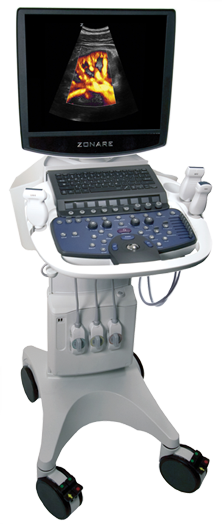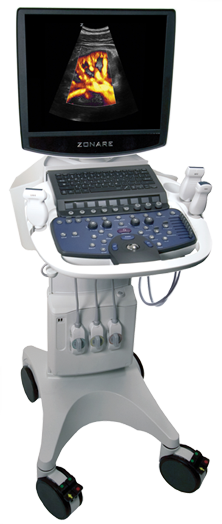
by All Things Neonatal | Apr 2, 2015 | cancer, Infection, Innovation, oncology, Vaccination

The following piece is by my first guest blogger Dr. Simon Trepel MD, FRCPC whom I have known most of my life and am delighted to present his work here. Simon is a Child Psychiatrist who has been touched by cnacer and has written a fascinating and touching piece below.
My wife, Kerri Tymchuk, died a bit over 2 years ago, at age 35, from metastatic breast cnacer. She left behind a loving husband and 2 beautiful daughters, ages 1 and 3, at the time of her death, at the claws of cnacer. I still can barely look at that word, or give it the decency of either spelling it correctly, or ever capitalizing it again. I remember having a similar reaction as a naive young child learning about the Jewish faith, and having a hard time with the word Jesus, as I could not reconcile a Messiah to come with one who had already come. Since then, Jesus and I are fine, and I am getting along well hoping for another. My point was that the word cnacer, to me, has become so strong, its power rivals the very existentialist crisis I had as a young boy.
The reason I am telling you this, is because anything relating to cnacer now sets off alarm bells in my head, as if my mortal enemy has mutated in rage again. I feel fear, and remember Kerri. And I whisper to her that she will be avenged when we learn which types of silver bullets work best on this beast that steals lives in every phase of the moon.
So I was captivated to learn on 60 minutes that there is a physician and research team that has seemingly discovered a possible miracle breakthrough in treating a very specific and deadly brain cnacer, called glioblastoma, or gb for short, spelled correctly. It seems that Dr. Annick Desjardins and the Duke cnacer Research Team have found that if you inject the polio virus directly into even the most aggressive gb tumors, the tumors replication, or ability to make unlimited copies of itself, is permanently stopped. It’s like unplugging cnacer’s Xerox machine. Once that happens, the polio virus then wreaks havoc in the gb cells themselves, and over the weeks and months to follow, your immune system beats up the schoolyard cranial bully until there is NOTHING LEFT.
Well, this got me thinking a bit about what we can do to potentially protect ourselves even better, in case we ever get gb ourselves, or it occurs, heaven forbid, in one of our children or extended family. The speed at which the cnacer cells in gb are destroyed depends on the immune system of white blood cells and other special cells. Some of these immune cells remember very well the viruses that egged the front porch of our face with a head cold or caused pneumonia or fever. If that same bacteria or virus comes around again, the immune system is exponentially better at mounting a response and ending the illness much quicker. The immune system also has the ability to recognize and destroy cnacer cells. Most cnacers are tricky, and go unnoticed in your body, wearing a disguise with a name tag that says ‘please look away while I kill you’. Incredibly, the polio virus, once it affects gb cells, seems to pull the mask off, and once this occurs, your own personal secret service, the immune system, rushes in, and blasts the cnacer dead like 007 (at least so far in the more than dozen formerly terminal patients who have responded to this form of treatment) .
The punch line of this short essay is to say that right now, you have the ability to potentially greatly improve your chances of surviving cnacer! At the very least, this breakthrough has been demonstrated in a highly malignant (able to double in size every 2 weeks) form of cnacer. If infecting other types of cnacers in a similar way, or with a different virus, also works, we may have a bona fide potential cure for cnacer on our hands. And our loved one’s can stay longer to live their lives.
This is not an infomercial for a new tropical berry juice or something that Jenny McCarthy is going to like. Getting immunized as a child with the regularly scheduled polio vaccination causes your immune system to recognize and destroy ANY cell (including cnacer cells) that have been infected with polio. Your immune system will respond more efficiently and faster, compared to never being immunized against polio. If infecting other types of cancers shows the same result, you may immediately get a huge head start on your future cnacer treatment by ensuring that you and your children are immunized according to the Health Canada Vaccination Schedule. For those anti vaccination people out there, at least consider the polio one. Once you are vaccinated against polio, your immune system will act like it is on steroids (the Ben Johnson kind) and you will beat polio infected glioblastoma, or perhaps all cnacers, in a similar fashion. Please think about it.

by All Things Neonatal | Mar 26, 2015 | Innovation, Point of Care Ultrasound

To quote Malcolm Gladwell, I think I witnessed a “Tipping Point” yesterday. The standard of practice for determining the presence or absence of pneumonia and pneumothorax has always been a chest radiograph. Determination of fluid collections by ultrasonography in the chest or abdomen, the domain of the Pediatric Radiologist.
Yesterday however, I was introduced to the use of bedside Point of Care Ultrasound (POC U/S) for the diagnosis of all of these aforementioned conditions. I spent the morning at a course on POC U/S for the Neonatologist and with that became comfortable much sooner than I expected with making such diagnoses based on some very straightforward criteria. Now before you think I am getting ahead of myself, I do not believe for a second that I am now competent to use U/S to replace radiographs as the “gold standard” in my practice. It has led me to consider though how one might go about reaching this level of confidence but I will share more on that later.
An example of how one can use ultrasound to exclude a pneumothorax is shown here https://www.youtube.com/watch?v=ws7DI4ZGQCo. The presence of bilateral “lung sliding” of the parietal and visceral pleura accompanied by “comet trails” excludes a pneumothorax. The absence of these findings is suggestive of a pneumothorax although other pathological findings can be present necessitating a chest x-ray. Think of how many times a patient develops a sudden increase in FiO2 and you do a chest x-ray to exclude a pneumothorax before increasing PEEP. This could change with acquisition of such technology.
The first question to really ask before taking the leap to replace or augment the classic chest radiograph is to look at the literature. With respect to the Neonate, the body of literature is not large but there are a couple of recent papers that are worth mentioning. The first is by Pereda MA et al. Lung Ultrasound for the Diagnosis of Pneumonia in Children: A Meta-analysis. (http://1.usa.gov/1CM24Sv) The review examined 9 studies of which 2 were in the neonatal population. The findings were intriguing. The sensitivity was 96% and specificity 93% when compared to the “Gold Standard” of either CXR or CXR with clinical diagnosis. To put this into context, there were 765 children who would have had thousands of x-rays during their hospital stay. This technology could reduce the number to ionizing radiation exposure by an extraordinary amount given the accuracy of the test compared to standard x-rays. The benefit of such reduction can be immediately appreciated when one considers that children are at an increased risk of malignancy compared to adults from ionizing radiation. Free supporting publication here.
The second paper to highlight is by Lovrenski J. Lung Ultrasonography of pulmonary complications in preterm infants with respiratory distress syndrome. Free supporting publication here
In this paper 120 patients with respiratory distress syndrome had U/S performed in the first 24 hours of life and then follow-up as indicated. Of this sample, 47 had complications including hemorrhage, pneumothorax, pneumonia, atelectasis and bronchopulmonary dysplasia. Of this group 45 were detected by ultrasound with the only two failures being small pneumothoraces. There were 512 ultrasounds performed compared to 612 clinically indicated chest x-rays during the same period. Again the potential reduction in ionizing radiation is astounding!
To be clear I am not suggesting that we do away with the chest x-ray but rather there is a great potential for reducing the need for the urgent chest x-ray when patient status changes. Depending on the situation in the unit you work in, an x-ray from the time it is ordered till the time it is performed and processed can be 15-30 minutes or more. The time it takes to perform a bedside ultrasound exam is 2-3 minutes at most making this modality at least in my mind a great first line option.
As I mentioned earlier though I am not an expert but merely an enthusiastic Neonatologist. This is not meant to replace the Pediatric Radiologist and in fact I would like to stress that I believe it is best suited to questions in which a binary yes/no answer is being asked. Does the patient have a pneumothorax, atelectasis, fluid in the abdomen or chest; all yes/no. Does the patient have a tumour in the liver and if so what type? That is a different kettle of fish and deserving of a Pediatric Radiologist’s opinion.
How do we go from “good to great” and utilize this technology accurately and safely. Clearly we are in need of practice, which can only come through training by qualified people who have demonstrated proficiency in the field. Thankfully in our situation we have access to individuals who have taught courses internationally and are willing to provide the training locally to us. Our strategy will include monthly U/S rounds supervised by these two experts who will provide a small group of us “superusers” with the training and ultimately confidence to put this into routine clinical practice. As confidence rises, the use of POC U/S to obtain vascular access will develop as will performance of such procedures as a bladder tap under direct visualization to improve our success rate. I suspect new uses will develop over time as we are at the forefront of this technology. There are courses offered abroad but like the paucity of Neonatal research in the area there are very few if any such programs for the Neonate specifically.
What I can say for sure is that the benefits of POC U/S are vast and I believe our patients will benefit both during their hospital stay and into adulthood due to the reduction in ionizing radiation that I see coming for these fragile infants. I for one am excited and energized by the future of this field and look forward to an expanding body of literature on the topic.

by All Things Neonatal | Mar 23, 2015 | Infection, Innovation
I came across an article from the BBC about a company in Israel that has developed a kit which can determine the presence of bacteria or virus in the blood of a patient within a two-hour window. More than that the kit has a point of care device as shown below.
Imagine for a moment the impact of being able to determine the presence or absence of sepsis within a two-hour window. Infants who have respiratory distress with a plan to assess in four-hours to determine need for antibiotics would never receive a dose. Other infants who were given one dose of ampicillin and gentamicin at birth would not need any further doses if the test indicated no bacteria or viruses present. Now you might say what is the harm in providing 48 hours of antibiotics or even 5 days if you are unsure of the presence of sepsis? There probably is little harm in a couple of days but the practice of prolonging antibiotics for fear that a patient has suspected sepsis is quite common in Neonatal circles. A recent article by Greenwood C et al (http://1.usa.gov/1Ex4qlH) examined stools at 1, 2 and 3 weeks of premature infants exposed to either short 1-4 day or longer 5-7 day courses of antibiotics. The results were quite striking in that the neonates exposed to the longer duration experienced less bacterial diversity than the other group and a preponderance of Enterobacter. Curiously levels of Lactobacillus and Bifidobacteria were low in all groups which might suggest a role for probiotics or explain why they might have been shown to reduce NEC. In fact in this study higher rates of NEC, sepsis and death were noted in the group receiving prolonged courses!
I have written other posts in which I have commented on Probiotics so to be clear I am not advocating that we use them routinely but one does have to wonder if it would be worthwhile repopulating the intestine of an infant who legitimately needed a 7 day course for a proven infection. Perhaps this post will stimulate someone to do that very study.
Aside from the perturbed microbiome leading to NEC, sepsis and death we also now have evidence of many long-term effects from antibiotics. The one creating the most alarm in press is no doubt the emergence of “superbugs” but more recently evidence has started to mount that repeated courses of antibiotics in infancy may lead to adult obesity (http://bit.ly/18JIIj7) and childhood allergy (http://bit.ly/1LwBmBc).
Getting back to this new technology it would still seem to be in the early stages. Looking through the company’s website they are allowing people to apply to be an early adopter. Additionally the links to their publications are really presentations at this time. A Pubmed search failed to come up with any specific articles regarding these products to I would have to say we are still in this products infancy. That being said it is certainly exciting to speculate about the impact that this innovation could have especially the point of care device pictured above which would bring the diagnosis to the bedside! I would encourage you to look at MeMeds website as it has a lot of very good information and if you check in from time to time who knows, you might be the first to hear that the two-hour test for sepsis is ready for use in your unit somewhere.
MeMed
http://www.me-med.com/html5/sbs.py?_id=11045&did=2466&G=2466





